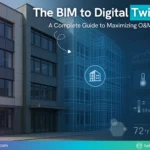The Potential for Technology in Urban Development and Smart Cities in India
September 14, 2020

The Government of India launched the Smart Cities Mission in 2014 with the intention of making Indian cities more integrated, sustainable, and data-driven. Beginning the initiative with 100 cities first, the Smart Cities Mission is being administered by the Ministry of Urban Development.
As per a report, about 68% of the world population will be living in cities by 2050 and the same seems true of India as well. In fact, we are likely to have over 60 cities with a population of more than 1 million and 6 megacities with a population of more than 10 million by 2030.
Such a large urban population will inevitably put a lot of pressure on resources like water, energy, infrastructure, transport, healthcare, etc. This makes the Smart Cities Mission even more important.
But what exactly are smart cities? And what potential does technology have in urban development and smart cities in India?
Understanding smart cities
Before understanding the potential of technology in the development of a smart city, we must first understand what a smart city is. It must be highlighted that there isn’t a single, universally accepted definition of a smart city. It varies from country to country, depending on the level of development.
But irrespective of region-specific connotations, the basic aim of a smart city is to improve the quality of life of its residents. A smart city is one that utilizes technology to improve its operations and services. It is a modernized territory that is capable of dealing with various economic, technical, and other aspects related to growth. Technology, thus, forms the backbone of a smart city.
Core technologies for developing a smart city
Most of the integrated solutions that empower a smart city are based on certain key technologies. These are Information and Communication Technology (ICT), Internet of Things (IoT), Sensors, Geospatial Technology, Artificial Intelligence (AI), and Blockchain. These core technologies form the backbone of all the major aspects of a city like traffic, finance, utilities, waste management, e-governance, and security. And behind all these technologies is a solid core of data analytics.
Let’s discuss these core technologies –
·Information and communication technology (ICT)
ICT plays an important role in building a bridge between citizens and the government. It allows the city residents to interact with the government, which, in turn, helps the government provide relevant services to its citizens.
·Internet of things (IoT)
IoT forms a network across the smart city that connects all dots for gathering data and driving actions remotely. All intelligent solutions in smart cities are based on IoT.
·Sensors
Sensors are key components of any smart control system. They are hidden but are present in large numbers. Sensors help convert physical parameters into a digital form for interpretation and action by humans or automated systems.
·Geospatial technology
This technology provides crucial location information that underpins the fabric of smart cities. It allows pinpointing exact locations in the city where solutions are required.
·Artificial intelligence (AI)
With smart systems, there comes a huge amount of data generation. The large amount of data generated by these systems needs to be processed and utilized. This is done by AI –at pace. It helps derive insights from swathes of generated data and also allows machine-to-machine interactions.
·Blockchain
Even though blockchain is comparatively new for smart cities, it can help give a boost to security and transparency in city services. It can also be employed to generate smart contracts for greater responsiveness and transparency.
Building information modeling for urban development
Building information modeling (BIM) is a technology that has major implications in the designing and implementation of smart cities, just as it does in all buildings.
BIM helps in urban development by assisting designers in planning and designing reasonable designs with better estimations and greater efficiency. BIM also helps analyze buildings in urban areas to resolve design stage issues. BIM can be used to help analyze how buildings in smart cities would interact with each other. In smart cities, powered by automation, the sheer quantity of BIM-linked data can be used to drive measurement and estimation for future developments. Thus, BIM can prove to be an important technology to enable smart cities and smart urban planning.
Use cases
The following use cases give a good idea of the potential of technology in urban development and smart cities –
- The city of Barcelona adopted IoT by implementing a fiber optics network throughout the city. This allowed the city to integrate different areas like water, lighting, and parking, etc. As a result, Barcelona was able to save about €75 million over time. It also led to the generation of 47,000 new jobs.
- The Dutch experimented with the idea of implementing IoT-based infrastructure in the city of Amsterdam. By monitoring and adjusting traffic flow, energy usage, and public safety in real-time, they were able to give a high quality-of-living to their citizens.
- In the United States, Boston and Baltimore cities have adopted smart trash cans by placing sensors inside them. This helps in optimizing trash collection routes.
- In Singapore, house owners in smart cities can monitor their energy consumption like electricity usage.
- In Tokyo, Japan, a smart town has been able to achieve a 70% reduction in carbon emission by using smart solar-powered grids.
There’s little doubt that the use of technology can help improve the quality of life in a smart city in areas like city navigation, public transport, public safety, energy consumption, entertainment, and tourism, etc.
Conclusion
India will see a large chunk of its population become a part of urban India in just a few years. That is why it is essential to leverage the full potential of technology in developing smart cities that are environmentally friendly, inclusive, and safe. Looking at the various openings to use technology in urban development, it’s clear that developing smarter Indian cities to improve the lives of millions of people is an achievable goal.















